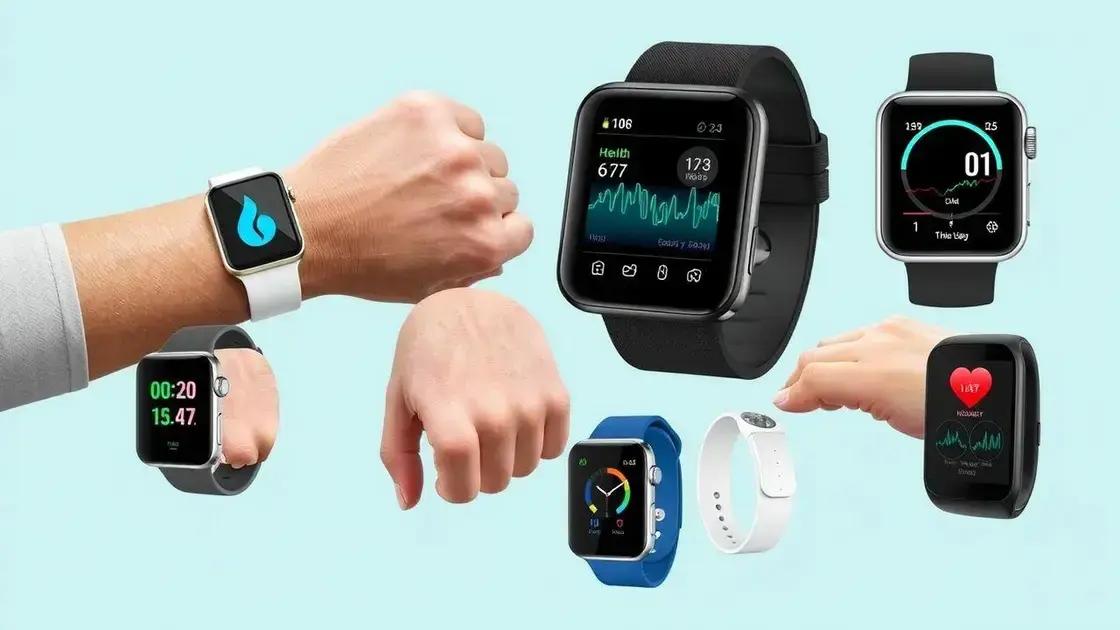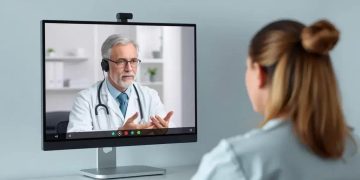What’s new in health tech advancements?
Emerging technologies in health tech advancements, such as telemedicine and wearable devices, enhance patient care through improved accessibility, real-time monitoring, and AI-driven diagnostics, leading to better health outcomes.
What’s new in health tech advancements? The landscape of healthcare is rapidly changing, driven by innovative technologies and solutions. Curious about how these advancements can improve patient care and accessibility? Let’s dive in.
Emerging technologies in health care
Emerging technologies are changing the landscape of health care. These innovations enhance patient care, streamline operations, and improve health outcomes.
Key Technologies Transforming Health Care
Let’s explore some key technologies making waves:
- Artificial Intelligence: AI is being used for better diagnostics and predictive analytics.
- Telehealth: This approach allows patients to connect with doctors remotely, increasing access to care.
- Wearable Devices: These gadgets monitor health metrics in real time, promoting proactive health management.
- Blockchain Technology: This maintains a secure and transparent system for patient data management.
The Role of Data Analytics
Data analytics plays a significant role in personalizing patient care. By analyzing patient history and trends, healthcare providers can offer targeted treatment plans.
Another aspect is the ability to predict outbreaks or health trends before they escalate. This proactive approach can save lives and reduce costs.
Continual advancements are reshaping how we think about health care. With each new innovation, our ability to provide effective and efficient health solutions grows stronger.
Impact of AI on diagnostics

The impact of AI on diagnostics is profound and transformative. AI technologies are streamlining how we diagnose diseases, making the process faster and more accurate.
How AI Enhances Diagnostics
AI systems analyze vast amounts of data to identify patterns that may not be visible to the human eye. These tools can process images and results with precision.
- Image Recognition: AI can detect abnormalities in medical images, such as X-rays and MRIs, with high accuracy.
- Predictive Analytics: AI algorithms can predict health risks based on patient histories and genetic information.
- Decision Support: AI assists doctors by providing evidence-based recommendations for diagnosis.
As AI tools continue to evolve, they improve diagnostic accuracy while reducing the time required. This allows for quicker treatment, resulting in better patient outcomes.
Moreover, AI technologies can learn from new data. As more medical data becomes available, these systems can update their algorithms, making them even smarter.
With AI’s ability to handle complex datasets, the future of diagnostics looks promising. These tools can greatly aid medical professionals, ensuring that patients receive the most effective care.
Telemedicine trends in 2023
Telemedicine trends in 2023 are reshaping how patients and doctors interact. This approach offers convenience, accessibility, and improved patient care.
Growth of Telemedicine Services
The use of telemedicine has skyrocketed, especially after recent global health challenges. Many patients now prefer remote consultations to in-person visits.
- Increased Access: Telemedicine breaks geographical barriers, allowing patients in rural areas to receive care easily.
- Convenient Scheduling: Patients can book appointments without taking time off work or traveling long distances.
- Cost-Effective Options: Many telehealth services are more affordable than traditional visits.
Moreover, technology continues to advance, enhancing the telemedicine experience. Secure platforms ensure patient privacy and data security, fostering trust among users.
Wearable devices also play a big role in telemedicine. These gadgets can monitor health metrics in real-time, allowing healthcare providers to keep track of patients’ conditions even from afar. This connectivity ensures better management of chronic illnesses.
The future of telemedicine includes further integration with artificial intelligence and machine learning. These technologies can help analyze patient data more efficiently, leading to personalized treatment plans.
Wearable devices and patient monitoring

Wearable devices are revolutionizing patient monitoring by allowing health data to be tracked in real time. These technologies provide valuable insights into a patient’s health, making it easier for healthcare providers to manage chronic conditions.
Types of Wearable Devices
Many different types of wearable devices are available today. Each serves a unique purpose in monitoring health:
- Fitness Trackers: These devices monitor steps, heart rate, and sleep patterns.
- Smartwatches: Many smartwatches have health monitoring features, such as ECG readings and oxygen saturation levels.
- Health Monitors: These might include patches or devices that continuously measure glucose levels for diabetic patients.
Wearables are not just for fitness enthusiasts. They play a vital role for patients with chronic diseases. For example, a heart patient can use a monitor to track their heart rate and notify their doctor of any irregularities.
Real-time data collection allows for timely interventions, which can significantly improve health outcomes. Doctors can make educated decisions based on accurate and up-to-date information. Additionally, patients often become more engaged in their health management when using wearables.
Manufacturers are continuously improving these devices. Innovations include longer battery life, better sensors, and enhanced connectivity options. With advancements in technology, the future of wearable devices looks promising.
FAQ – Frequently Asked Questions about Health Tech Advancements
How is telemedicine changing patient care?
Telemedicine makes healthcare more accessible by allowing patients to consult with healthcare providers remotely, reducing travel and wait times.
What are the benefits of wearable devices for patients?
Wearable devices continuously monitor health metrics, helping patients manage chronic conditions and providing real-time data for healthcare providers.
How does AI enhance diagnostics in healthcare?
AI analyzes large amounts of medical data, improving diagnostic accuracy and allowing healthcare professionals to make informed decisions quickly.
What can patients expect from future health tech advancements?
Patients can expect a more personalized healthcare experience, increased convenience, and better management of their health through advanced technologies.





